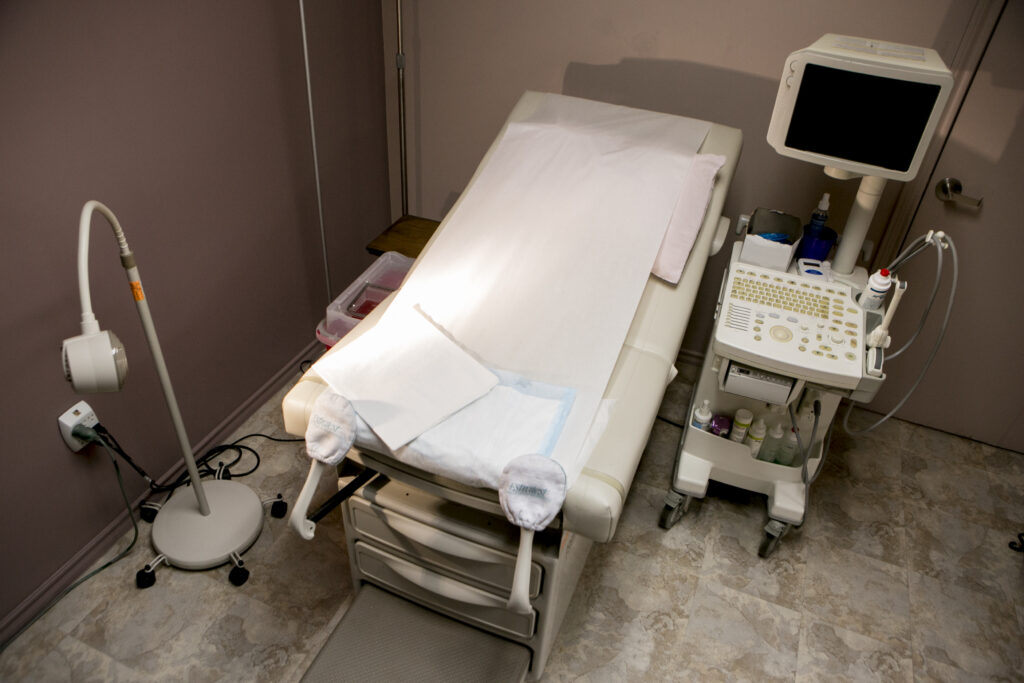Editors’ note: After S.B. 8 went into effect on September 1, staff from the Brennan Center for Justice came together to show solidarity, express outrage, and articulate a response. That conversation morphed into an electrifying brainstorm with colleagues at Ms., the result of which is captured in an array of essays that provide 11 different answers to an important question: Why is abortion so essential to democracy? By joining our voices, we’re demonstrating the fight for abortion rights, the fight for equality, and the fight for representative democracy are all in service of the same goal: justice for all.

With a looming Supreme Court ruling that could overturn or severely undermine Roe v. Wade, legislatures in 26 states are poised to move quickly to outlaw abortion if given the green light. This seemingly dystopian reality has been years in the making. The 2021 legislative session saw the passage of over 100 abortion restrictions—more than in any other year since Roe was decided. At present, nearly 60 percent of the population lives in a state that is hostile or extremely hostile to abortion rights.
A robust and multifaceted coalition continues to fight for abortion rights in the courts, Congress and state legislatures. Critical to this movement are local abortion funds—on-the-ground groups and networks that provide dollars to directly cover the cost of abortion procedures, as well as support for collateral needs like transportation, lodging, food, childcare and doula services.
Abortion funds often serve as an initial point of contact and primary support system for patients navigating myriad barriers—from managing basic logistics, to debunking misinformation, to facing harassment and intimidation at clinics—as well as state-proscribed hurdles like mandatory waiting periods, parental consent or judicial bypass provisions. And they play a crucial advocacy role in addressing those most impacted by these restrictive laws, centering low-income, young, and communities of color, among others. The National Network of Abortion Funds (NNAF) powerfully calls out the need for such “organizing at the intersections of racial, economic and reproductive justice.”
Abortion funds often serve as a primary support system for patients navigating myriad barriers—from managing basic logistics, to facing harassment and intimidation at clinics.
Despite the clear and present need for the services they provide, a January 2021 report issued by the National Committee for Responsive Philanthropy found that foundation support for abortion funds occupies only a small fraction—just 3 percent—of the overall philanthropic commitment to reproductive rights initiatives nationwide.
Compounding the problem of underinvestment is the “boom/bust” dynamic. In September, for example, as abortion access plummeted in Texas after S.B. 8 went into effect, an alarmed public reacted and donations to local abortion funds temporarily soared. But just one year prior in 2020, several abortion funds reported having lost major support as donors’ priorities shifted to other emergencies. Such inconsistency is untenable for effective planning and service, even in normal times. And the road ahead is going to be anything but.
Current predictions estimate that close to half (41 percent) of the population who might need an abortion can expect to see their nearest clinic close if Roe is overturned; the average travel distance to a clinic in the United States would skyrocket from 35 to 279 miles.
Among other health and safety hazards caused by increased distance, it also makes abortions more expensive. Take Texas as a real-time example, using statistics provided by the Guttmacher Institute. Under the requirements of S.B. 8, the average one-way driving distance to a clinic that can provide abortions after six weeks has now increased from 17 miles to 247 miles. Someone earning minimum wage—$7.25 an hour in Texas—would have to devote a full day’s earnings just to cover the cost of gas for the round-trip route.
And since for most Texans the nearest out-of-state clinics are now in Louisiana or Oklahoma or Arkansas—states that also have policies that make abortion exceedingly hard to obtain—the travel and cost equation will likely worsen in the near future.
Support for abortion funds occupies only a small fraction—just 3 percent—of the overall philanthropic commitment to reproductive rights initiatives nationwide.
Expanded investment in abortion funds is urgently needed to keep up with current demand for direct aid, as well as to prepare for an uncertain and surely more challenging future. In 2020, NNAF reported that it was able to serve just 44,000 of 230,000 requests for help. And as more than 35 local abortion funds recently wrote in a “friend-of-the-court” brief to the Supreme Court, patients’ financial needs are often greater than the amount that can be provided.
Further, as states double-down on criminalizing abortion and those who provide help obtaining them, new types of organizations like abortion bail funds must also be incorporated into the philanthropic approach. At the same time, certain states will likely emerge as abortion safe havens, and local and state groups and governments there must be equipped and resourced to ensure that access extends to people who reside outside their borders.
Prioritizing support for abortion funds is an essential companion to funding national and state-based legal and policy advocacy campaigns. Much like many allied movements have committed to aligning their strategic action and resources—for example, by helping voters register, pay fees and navigate restrictions while advancing proactive policies that expand the franchise—a holistic approach makes for smart, effective philanthropy in the abortion context too.
Central to the defense of reproductive rights for all must be the provision of and commitment to direct aid to the communities facing those attacks head-on.
Care about equality? We do too. Let Ms. keep you up to date with our daily + weekly newsletters. (Or go back to the essay collection.)








